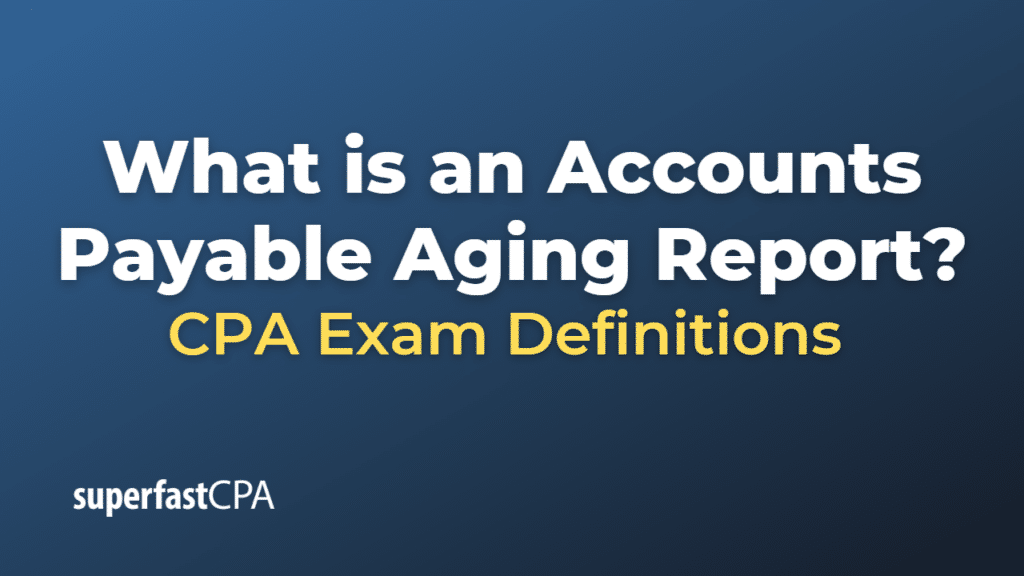Accounts Payable Aging Report
An accounts payable aging report is a financial report that categorizes a company’s outstanding accounts payable according to the length of time they have been outstanding. The report helps businesses to analyze and manage their short-term liabilities, monitor payment due dates, and maintain good relationships with suppliers or creditors.
The accounts payable aging report typically divides outstanding payables into different time buckets or aging categories, such as:
- 0-30 days
- 31-60 days
- 61-90 days
- Over 90 days
Each aging category represents the number of days since the invoice date or the age of the outstanding payable. The report lists the unpaid invoices in each category, along with the supplier’s name, invoice number, invoice date, and the outstanding balance.
The primary purpose of the accounts payable aging report is to provide insights into a company’s payment patterns and help identify potential cash flow issues or late payments. The report assists management in prioritizing payments to suppliers and making informed decisions about working capital management.
An accounts payable aging report can also be used to:
- Identify potential disputes or errors in invoicing, as invoices that remain unpaid for an unusually long time may indicate a problem.
- Evaluate supplier relationships, as consistent late payments may affect a company’s reputation and creditworthiness with suppliers.
- Assess the efficiency of the accounts payable department, as a well-managed department should process payments promptly and minimize the number of overdue payments.
- Negotiate better credit terms with suppliers by demonstrating a track record of timely payments.
In summary, an accounts payable aging report is a valuable financial management tool that helps businesses monitor and manage their short-term liabilities, maintain good relationships with suppliers, and optimize cash flow and working capital management.
Example of an Accounts Payable Aging Report
Let’s consider a fictional company, “Delicious Bakery,” which has outstanding accounts payable to several suppliers. Here is an example of an accounts payable aging report for Delicious Bakery:
| Supplier | Invoice No. | Invoice Date | 0-30 Days | 31-60 Days | 61-90 Days | Over 90 Days |
|---|---|---|---|---|---|---|
| Flour Supplier | 1001 | 01/01/2023 | $2,000 | |||
| Sugar Supplier | 1010 | 12/15/2022 | $1,500 | |||
| Milk Supplier | 2005 | 12/01/2022 | $500 | |||
| Oven Repair | 3001 | 10/15/2022 | $300 | |||
| Total | $2,000 | $1,500 | $500 | $300 |
This accounts payable aging report is organized into aging categories, representing the number of days since the invoice date.
In this example:
- Delicious Bakery owes $2,000 to the Flour Supplier for an invoice that is 0-30 days old.
- They owe $1,500 to the Sugar Supplier for an invoice that is 31-60 days old.
- They owe $500 to the Milk Supplier for an invoice that is 61-90 days old.
- They owe $300 to the Oven Repair service for an invoice that is over 90 days old.
The report provides management with an overview of Delicious Bakery’s outstanding payables, helping them prioritize payments and manage cash flow effectively. The company might decide to pay the oldest invoices first, such as the Oven Repair service, to minimize the risk of damaging relationships with suppliers due to late payments. Additionally, the report can help identify potential errors or disputes and provide insights into the efficiency of the accounts payable process.












